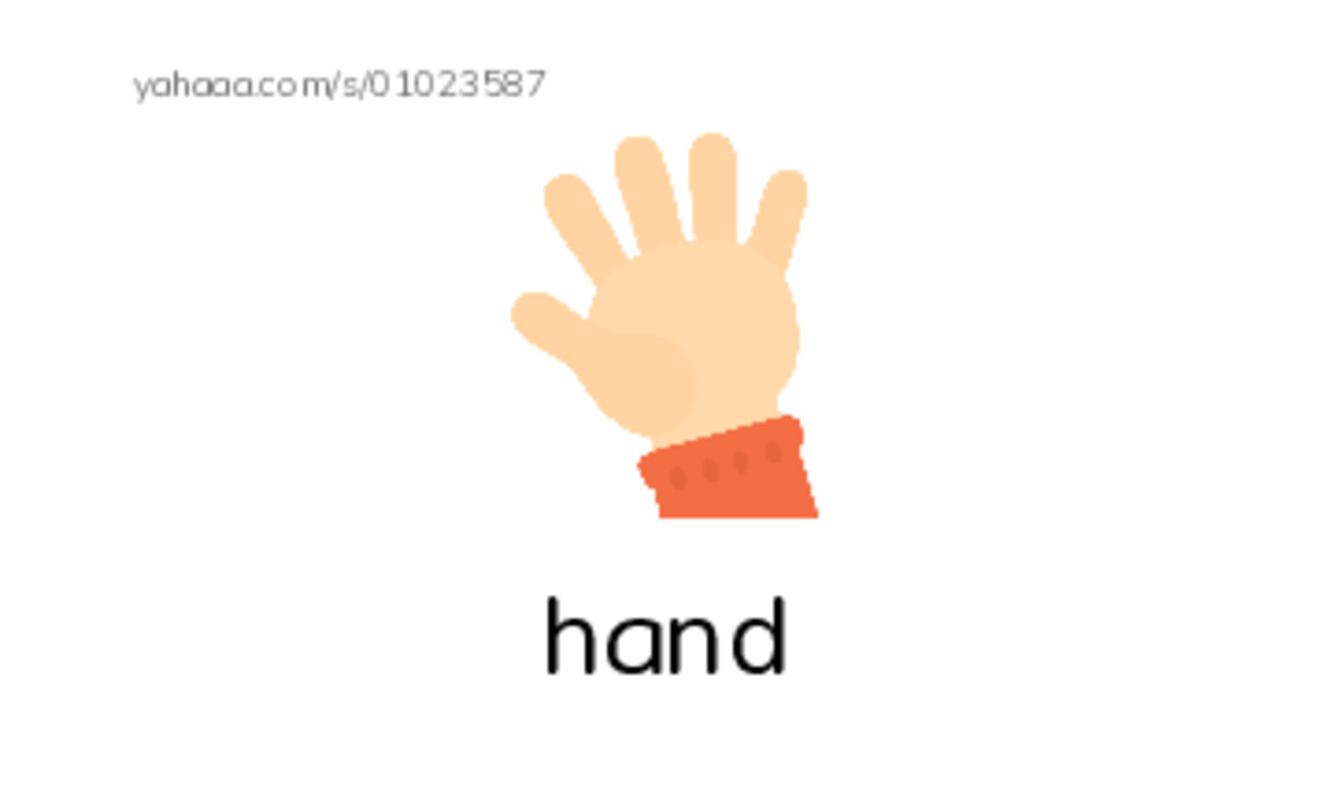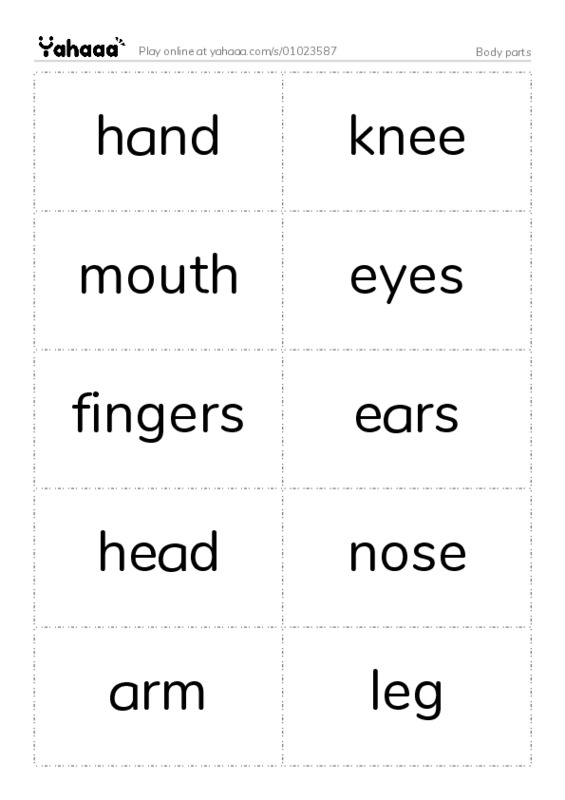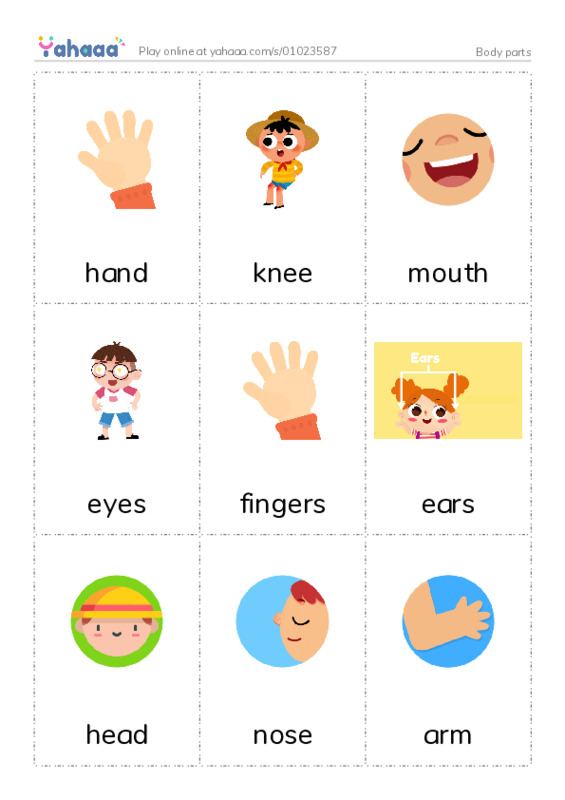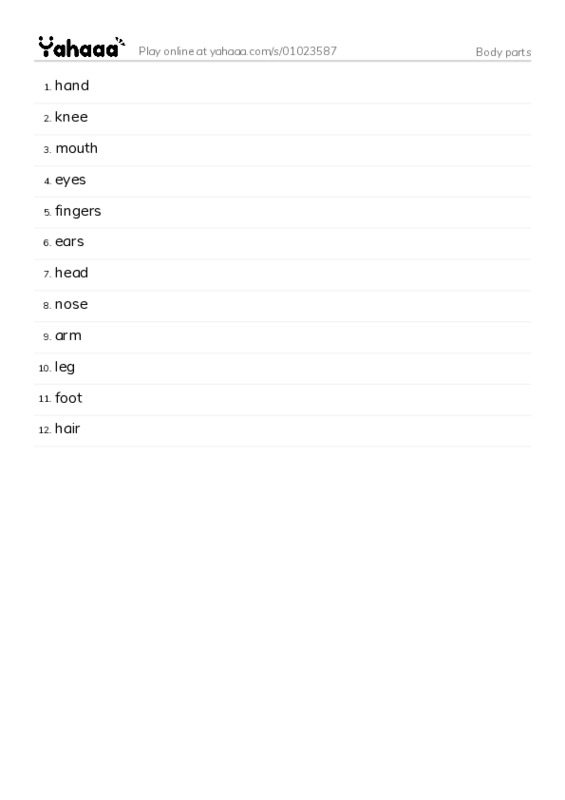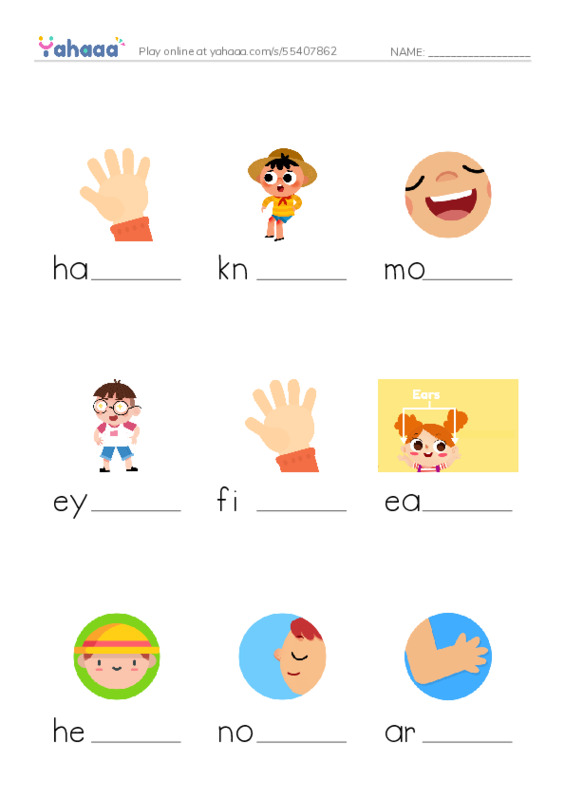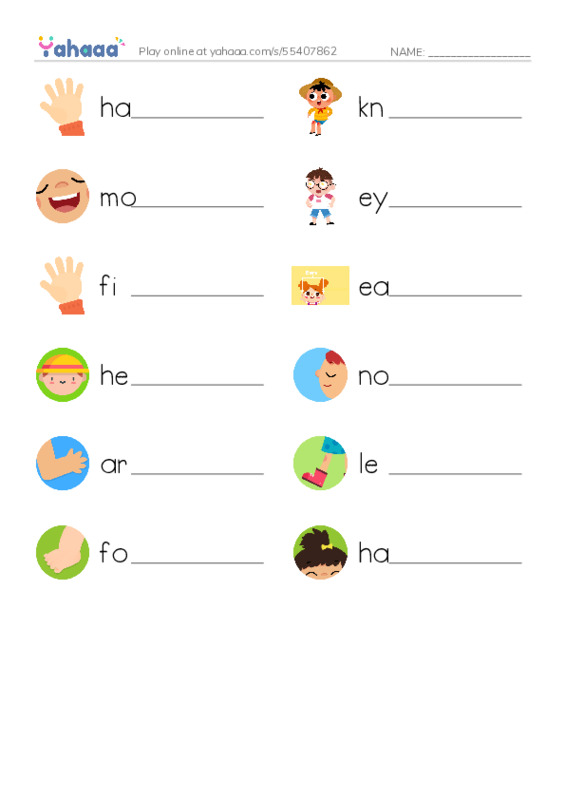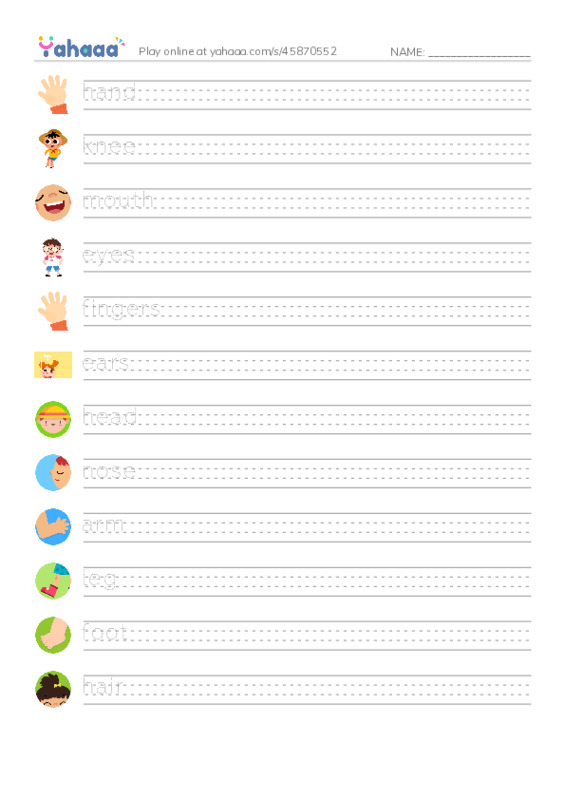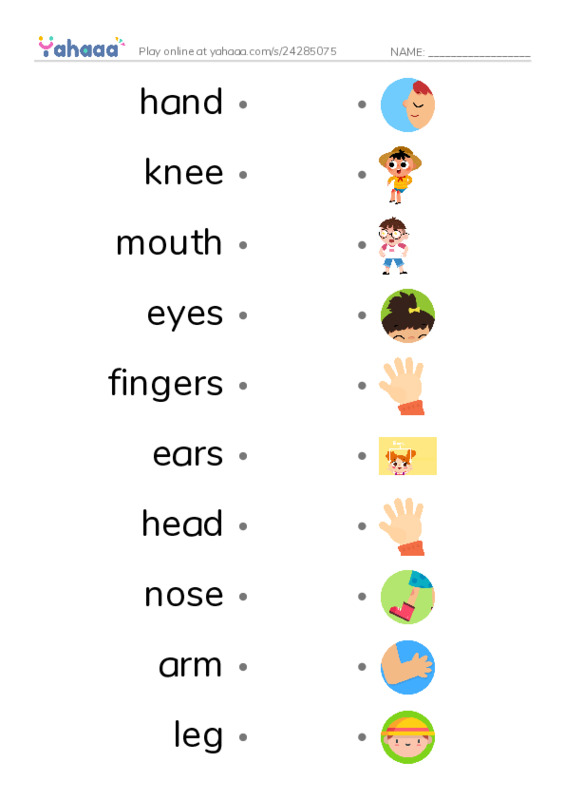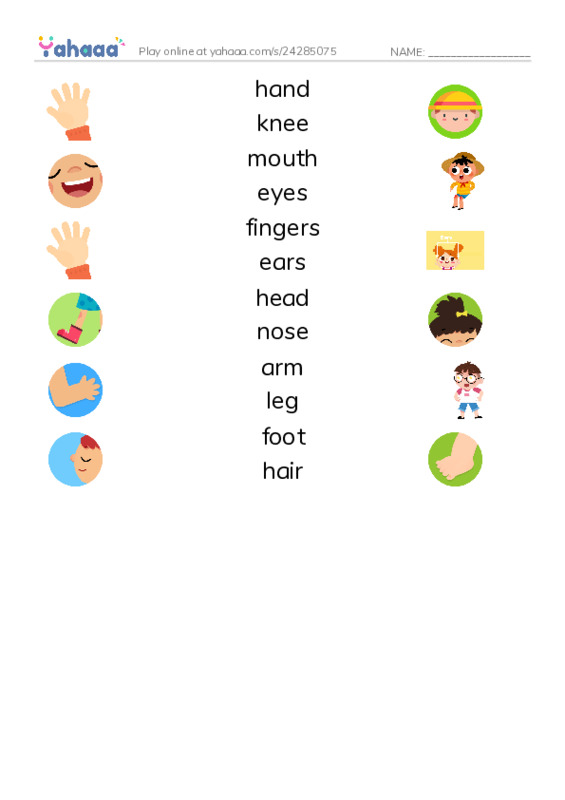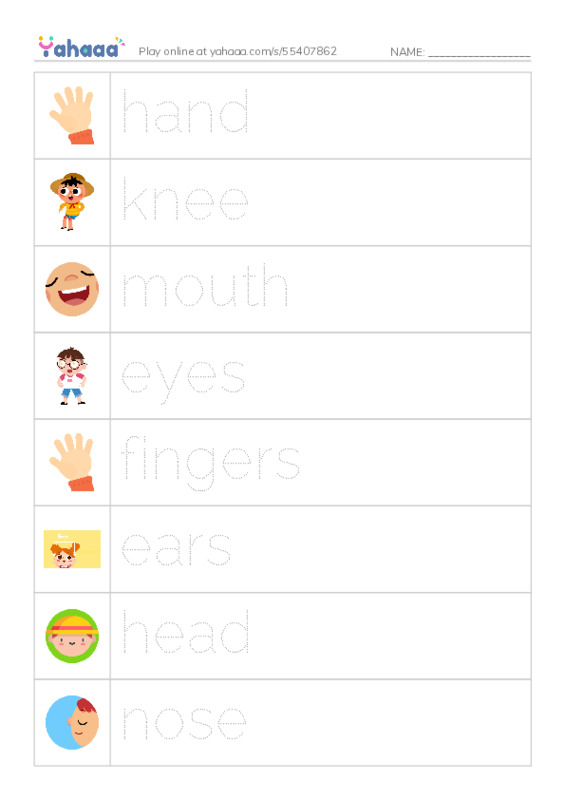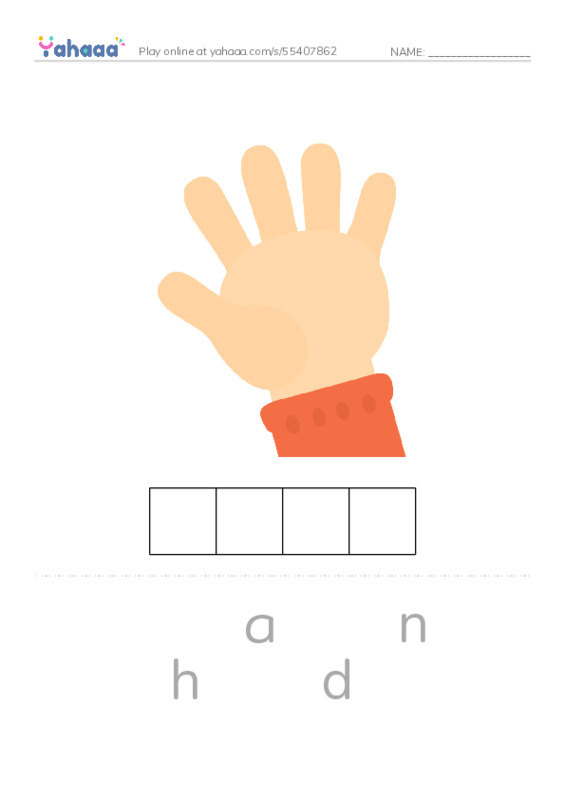The ultimate free PDF anatomy index cards for kids to learn new body parts!
A free and printable PDF index card worksheet for kids to learn body parts anatomy vocabulary and learn to pronounce them would likely include a series of index cards, each with a different body part vocabulary word printed on it. The words might include common body parts such as "head," "eyes," "ears," "nose," "mouth," "arms," "legs," "feet," and so on. The worksheet might also include a corresponding image of the body part on each card to help kids visualize and understand the word.
The worksheet could be used in a variety of ways to help kids learn and practice their body parts vocabulary. For example, kids could use the cards to play a matching game, where they match the word on one card with the corresponding image on another card. They could also use the cards to play a memory game, where they try to remember the location of different body part words on the cards.
In addition to helping kids learn and practice their body parts vocabulary, the worksheet could also include pronunciation guides for each word. This could help kids learn the correct way to say each word and improve their overall pronunciation skills. The pronunciation guides could be in the form of phonetic spellings, audio recordings, or both.
Overall, a free and printable PDF index card worksheet for kids to learn body parts anatomy vocabulary and learn to pronounce them would provide a fun and engaging way for kids to learn and practice important vocabulary words related to the human body. By using the cards to play games, learn new words, and improve their pronunciation skills, kids can develop a better understanding of the body and improve their overall language skills.
What are these Yahaaa worksheets good for?
A free and printable PDF index card worksheet for kids to learn body parts anatomy vocabulary and learn to pronounce them would be good for kids of all ages who are learning about the human body and its various parts. This type of worksheet could be particularly useful for younger children who are just beginning to learn about the body and its different parts, as well as for older kids who are studying anatomy in school and need additional practice with vocabulary words.
In addition to being good for kids, a free and printable PDF index card worksheet for kids to learn body parts anatomy vocabulary and learn to pronounce them could also be helpful for parents and educators who are looking for fun and engaging ways to teach kids about the human body. By using the worksheet as a teaching tool, parents and educators can help kids develop a better understanding of the body and its various parts, as well as improve their vocabulary and pronunciation skills. This type of worksheet could be used in a classroom setting, at home, or in other educational environments.
How should one use these worksheets?
Here are a few ideas for how the worksheet could be used:
As a matching game: Kids can use the index cards to play a matching game, where they match the body part vocabulary word on one card with the corresponding image on another card. This can help kids learn and practice the words, as well as improve their memory skills.
As a memory game: Kids can also use the cards to play a memory game, where they try to remember the location of different body part words on the cards. This can help kids improve their concentration and memory skills, as well as reinforce their understanding of the vocabulary words.
As a pronunciation guide: The worksheet could also include pronunciation guides for each body part vocabulary word, in the form of phonetic spellings or audio recordings. Kids can use these guides to learn the correct way to say each word and improve their overall pronunciation skills.
As a teaching tool: Parents and educators can use the worksheet as a teaching tool to help kids learn and practice body part vocabulary words. The worksheet can be used in a classroom setting, at home, or in other educational environments to help kids develop a better understanding of the human body and its various parts.
Overall, a free and printable PDF index card worksheet for kids to learn body parts anatomy vocabulary and learn to pronounce them can be used in a variety of ways to help kids learn and practice important vocabulary words related to the human body. By using the worksheet in fun and engaging ways, kids can develop a better understanding of the body and improve their overall language skills.
In more details:
Here is a concrete example of how a free and printable PDF index card worksheet for kids to learn body parts anatomy vocabulary and learn to pronounce them could be used:
Suppose a group of kids are using the worksheet to learn and practice body part vocabulary words. The worksheet includes a series of index cards, each with a different body part vocabulary word printed on it, along with a corresponding image of the body part.
To use the worksheet, the kids can first shuffle the cards and lay them out face down on a table or other flat surface. Then, they can take turns flipping over two cards at a time, trying to match the vocabulary word on one card with the corresponding image on the other card. If the kids make a match, they can keep the pair of cards and take another turn. If they don't make a match, they can turn the cards back over and the next person can take a turn.
By playing the matching game, the kids can also use the worksheet to practice their pronunciation skills. The worksheet might include pronunciation guides for each vocabulary word, in the form of phonetic spellings or audio recordings. The kids can use these guides to learn the correct way to say each word and practice saying them out loud.
This is just one example of how a free and printable PDF index card worksheet for kids to learn body parts anatomy vocabulary and learn to pronounce them can be used to help kids learn and practice important vocabulary words related to the human body. By using the worksheet in fun and engaging ways, kids can develop a better understanding of the body and improve their overall language skills.
